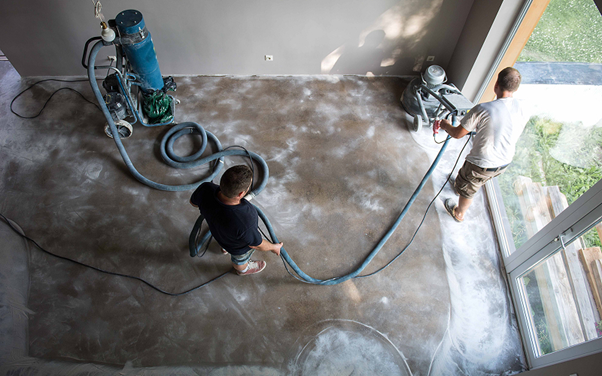Dust accumulation in industrial facilities is influenced not just by the type of operations, but also by seasonal changes. Temperature variations, humidity levels, and environmental factors affect how much dust settles on surfaces, particularly on ceilings, where build-up often goes unnoticed. Understanding these seasonal patterns allows facility managers to adjust air dust cleaning services and ceiling cleaning schedules to ensure compliance, safety, and operational efficiency.
Winter: Increased Indoor Dust Circulation
Industrial facilities often operate with closed windows and reduced ventilation to conserve heat in winter, particularly in temperate and colder regions. While this limits the entry of outdoor dust, it also traps indoor particles generated from machinery, packaging materials, and human activity. The result is a higher concentration of airborne dust that recirculates within the facility. Over time, these particles settle on ceilings, ducts, and support beams.
Industrial ceiling cleaning during or just after winter is critical for facilities in colder climates to remove this compact layer of dust before warmer months increase airborne activity again. On the other hand, in tropical climates, where winter is not a factor, this period may correspond to the dry season, when airborne dust from outside enters more easily through ventilation systems, also warranting more frequent air dust cleaning services.
Spring: Pollen and External Particulate Infiltration
Spring often brings increased pollen levels and other organic particles, which can infiltrate industrial spaces through ventilation systems. Facilities located near agricultural areas or green zones are particularly vulnerable. Pollen particles are light and can travel deep into ceiling structures, where they may stick to rafters, beams, and air ducts.
These particles, when mixed with industrial dust, can form stubborn residues that are harder to clean if left too long. Due to this, spring is an ideal time to schedule air dust cleaning services to prevent allergens from affecting workers and to maintain air quality compliance. Industrial ceiling cleaning during this period also addresses the combined effect of winter’s dust build-up and spring’s pollen influx, ensuring surfaces remain free from layers that can later become a breeding ground for mould.
ALSO READ: Facing Floods in a Changing Climate: How BELFOR Builds Resilience in Asia
Summer: Heat-Driven Dust Movement
Summer conditions, especially in regions with high temperatures, can cause greater air movement within industrial facilities due to increased ventilation or the use of cooling fans. This movement often keeps dust particles airborne for longer before they settle, leading to more widespread distribution across ceilings and hard-to-reach areas.
Additionally, higher temperatures can cause certain industrial materials to release fine particulate matter more rapidly. The rate of dust generation can peak in summer, particularly in manufacturing plants, food processing units, or facilities handling powdered goods. Scheduling industrial ceiling cleaning mid-summer or towards the end of the season ensures that accumulated particles do not combine with humidity during the next seasonal transition, which can make cleaning more challenging and costly.
Autumn: Harvest and Dry Debris Impact
Autumn, especially in agricultural or rural settings, is characterised by increased airborne debris due to harvesting activities and falling leaves. This material can easily infiltrate industrial spaces through open doors and ventilation systems. The drier air common in autumn also means dust particles remain loose and settle quickly on elevated surfaces, forming a visible layer over beams, piping, and ceiling panels.
Air dust cleaning services, particularly for facilities near farms, are essential during this period to manage debris that could interfere with machinery or cause contamination in sensitive operations. Performing industrial ceiling cleaning before winter sets in also ensures that dust is removed before heating systems are used extensively, which would otherwise re-circulate the debris into the work environment.
Conclusion
Seasonal variations significantly influence how dust accumulates in industrial environments, and recognising these patterns allows for more effective maintenance scheduling. Facilities can maintain higher air quality, improve safety, and protect machinery from dust-related damage by aligning air dust cleaning services and ceiling cleaning with the unique challenges of each season. A proactive, seasonally adjusted cleaning plan not only supports compliance with health and safety standards but also enhances overall operational efficiency.
Visit BELFOR to ensure your facility is always prepared for seasonal dust challenges.

